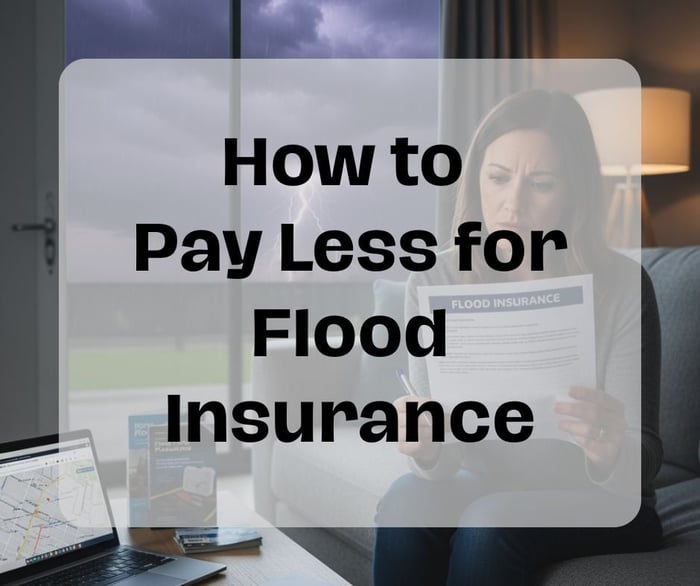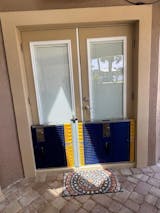Table of Contents
Are you tired of paying huge prices for your flood insurance? If you own a home in a flood-prone area—maybe places like Houston, Texas, the Gold Coast in Australia, or Bermondsey in London—you already know the worry. Floods happen, and regular home insurance won't cover the damage. You need the insurance.
But here's the good news: you don't have to just accept super high premiums. There are real, practical steps you can take today to get serious insurance discounts and lower the cost of your insurance policy. Think of this as your homeowner's guide to smart home protection and big savings!
Why Is Flood Insurance So Expensive?
First, let's understand why your flood insurance bill is so high. It all comes down to risk. Insurers look at a few main things:
Your Location (Flood Zone): The closer you are to a river or coast, the higher the risk.
Property Elevation: How high is the lowest floor of your home compared to the expected flood level? Lower is higher risk.
Past Claims: If your house has been flooded before, the insurer sees it as more likely to happen again.
Basements: A flooded basement is very costly to fix, so having one can increase your rates.
The key to getting discounts is to lower your risk in the eyes of the insurance company. Let’s dive into the best hacks!
Hack 1: Use Flood Protection to Show You’re Safe
One of the best ways to get discounts on your flood insurance is to show your insurer that you've taken steps to protect your home. This is called "mitigation," and insurers love it because it means fewer claims for them.
Proactive Flood Protection = Lower Premiums
Insurance companies often give better rates when you use strong, proven flood defense systems. They know that a good barrier will likely stop the water from getting in, saving them thousands on repairs.
This is where a product like the Dam Easy Flood Barrier comes in.
Quick & Easy Barriers: The Dam Easy Flood Barrier is an easy-to-use, reusable device that creates a strong, watertight seal in your doorways. It stops water right at the point where it tries to enter your house.
Protection for Entry Points: These flood barriers for doors are designed to seal the most vulnerable spots—like your back door, front door, or garage entry. They are a much better and faster solution than messy sandbags.
A Smart Investment: When you tell your insurance agent you have installed certified flood protection like Dam Easy, they see a much lower risk of a costly claim. This proactive home protection move can lead to real insurance discounts.
Action Step: Keep receipts and take photos of any flood barriers you install. Send this proof to your flood insurance agent and ask specifically about their "mitigation discounts."
El dique de contención de inundaciones.

€779,00
Dam easy® para evitar la inundación de la represa. Las inundaciones son cada vez más frecuentes en todo el mundo.Lo que solía ser un fenómeno centenario se ha convertido en una tendencia estacional que los propietarios deben afrontar. … Read More
Hack 2: Raise Up the Important Stuff
Water seeks the lowest point. If you can keep the most expensive things above the flood line, you reduce the damage and save money on your insurance premium.
Elevate Utilities
Furnace and Air-Con: If your air conditioning unit or furnace is in a flooded basement or low crawlspace, raise it up onto concrete blocks or a special platform.
Electrical Panels: Move your main electrical switch box (breaker panel) and outlets above the base flood elevation (BFE) for your area. Water and electricity do not mix!
Get an Elevation Certificate (EC)
While not always required anymore (especially with new systems like Risk Rating 2.0 in the US), having a recent Elevation Certificate from a land surveyor proves exactly how high your house is.
Why it helps: If your home's lowest floor is higher than the expected flood level, you could get a huge discount. An EC is the official paperwork that proves it, which many private flood insurance companies still love.
Hack 3: Change How You Buy Your Flood Insurance
Your choices when buying the policy can have a big impact on the final price.
Increase Your Deductible
The deductible is the amount of money you agree to pay out of your own pocket before the flood insurance company starts paying.
The Deal: If you choose a higher deductible—say, increasing it from $1,000 to $5,000—your yearly premium will drop. You're taking on more of the small risk, and the insurer rewards you with a discount. Just make sure you can afford the deductible if a flood does happen!
Shop Private Flood Insurance
The US National Flood Insurance Program (NFIP) is one option, but don't stop there.
Compare Quotes: Flood insurance is offered by private companies, too. These private insurers often offer more flexible coverage and may give better insurance discounts if you have taken strong home protection steps. Always compare rates between the NFIP and at least two private companies.
Check Your Community Rating
In the US, some towns and cities take extra steps to reduce flood risk. This is part of the Community Rating System (CRS).
The Benefit: If your community does well in the CRS, all residents in that area get an insurance discount on their NFIP flood insurance premiums—sometimes up to 45%! Ask your local government if your area is enrolled.
Top Flood-Prone Areas: Be Extra Smart!
If you live in one of these areas, taking the steps above is critical for home protection and saving money on your flood insurance:
| Country | Flood-Prone Residential Locations | Risk Type |
| USA |
| Heavy rainfall, hurricanes, coastal surges. |
| Australia |
| Riverine and flash flooding from tropical systems. |
| UK |
| River flooding and surface water in dense urban areas. |
Homeowners in these specific areas must be extra proactive. For example, if you live in Boston, Lincolnshire, a town known for flood risk, putting flood barriers for doors in place is not just a smart money move—it’s essential home protection.
Your Action Plan for Flood Insurance Discounts
Don't wait until the next flood warning. Start saving money and protecting your home today:
Check Your Policy: Review your current flood insurance deductible and coverage. See if a higher deductible is right for you.
Take Action: Look at your home. Can you raise any vital equipment? Can you fill foundation cracks?
Install Smart Barriers: Invest in reliable, easy-to-use flood barriers for doors like the Dam Easy Flood Barrier. It's fast, effective home protection that reduces the risk of a flooded basement.
Talk to Your Agent: Contact your flood insurance provider. Tell them about your home protection measures (like your Dam Easy Barrier) and ask what insurance discounts you qualify for.
Shop Around: Get quotes from the NFIP and a couple of private insurers. The prices can be very different!
Taking steps for better home protection is the best way to lower your flood insurance costs. You get peace of mind and a lower bill. It's a win-win!
Ready to secure your home and start saving on your premiums? Would you like me to find the nearest retailer of Dam Easy Flood Barriers in your area?
FAQs
What is flood insurance, and why do I need it?
Flood insurance is a specific type of property insurance that covers damages to your home and belongings caused by rising water from natural events like heavy rain, storms, or overflowing rivers. Standard homeowners insurance does not cover flood damage, which is why a separate flood insurance policy is essential for financial protection, especially if you live in a flood-prone area.
How can I lower the cost of my flood insurance premium?
You can lower your premium by reducing the flood risk to your home. Key ways include:
Installing physical flood protection (like flood barriers for doors).
Increasing your policy deductible.
Elevating critical utilities (furnace, A/C unit).
Getting an Elevation Certificate if your house is built high.
Checking if your community participates in the Community Rating System (CRS).
Does installing flood barriers, like Dam Easy, really get me flood insurance discounts?
Yes, it often can! Insurance companies look for evidence of proactive "mitigation"—meaning you’ve taken steps to reduce the potential for damage. By installing certified flood barriers on vulnerable entry points, you significantly lower the chance of a successful claim. Show your agent proof of these barriers and ask about specific mitigation or home protection discounts.
Where can I buy flood insurance?
In the United States, most flood insurance is bought through the National Flood Insurance Program (NFIP), which is managed by FEMA. However, you can also purchase policies from a growing number of private flood insurance companies. It's always a good idea to compare quotes from both the NFIP and private insurers to find the best rate and coverage.
If I have a basement, how does that affect my flood insurance rate?
Having a basement generally increases the risk of a costly claim due to potential damage from a flooded basement. This can lead to a higher flood insurance premium. To help lower this, focus on proactive steps like elevating major appliances in the basement and using reliable flood barriers for doors and windows leading to the basement.
Is flood insurance required if I don't live in a high-risk flood zone?
If you have a mortgage and live in a high-risk flood zone, your lender will legally require you to carry flood insurance. However, floods can happen anywhere—over 20% of flood claims come from properties outside of high-risk zones. It is highly recommended to consider flood insurance even if it’s not required, as it provides essential financial home protection.



















